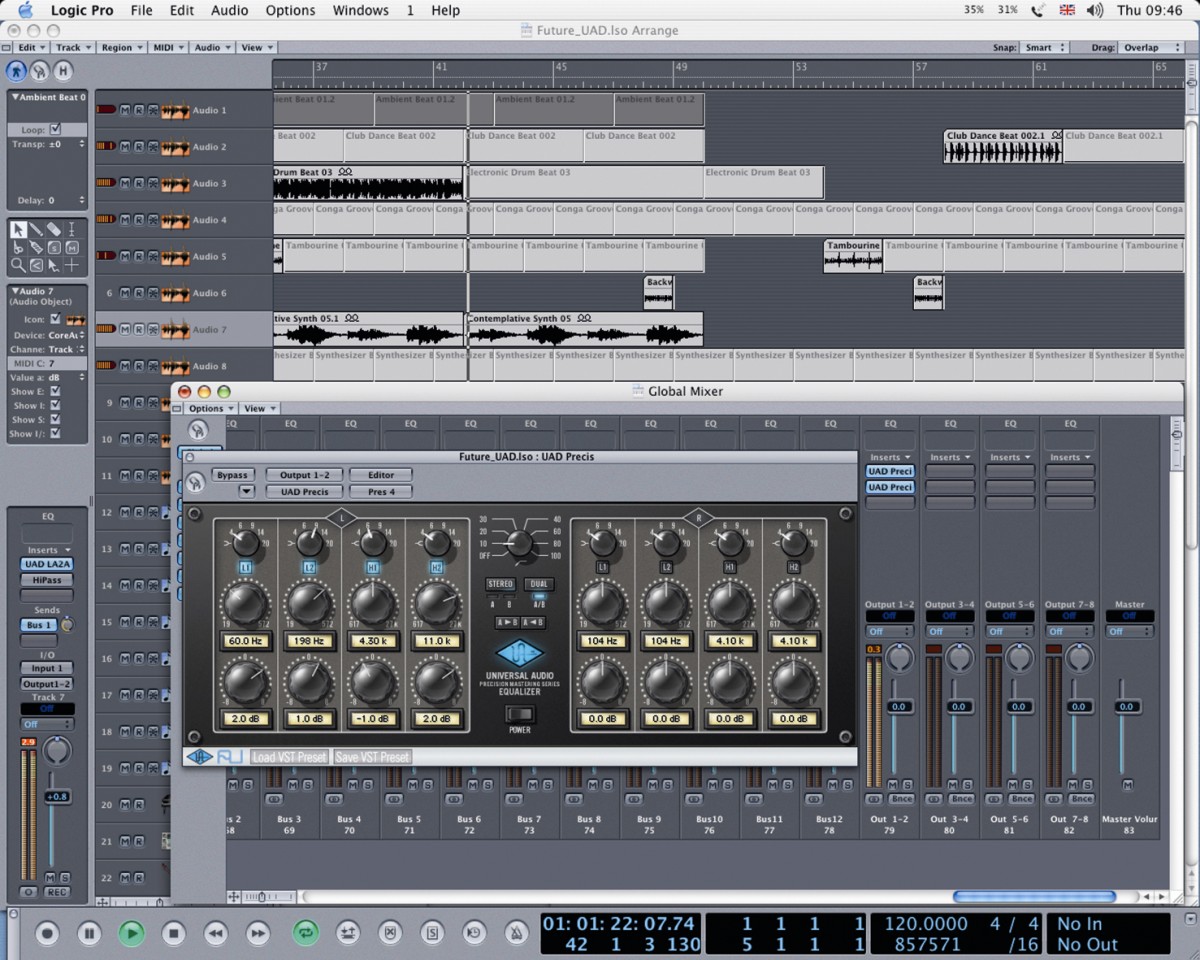MusicRadar Verdict
UAD proves a software limiter really can be good at this price.
Pros
- +
Deals with sonic extremes superbly. Perfected attack effects. Well-priced plugin.
Cons
- -
Not quite the ultimate loudness weapon. Limited dynamic range.
MusicRadar's got your back

The Precision offers completely transparent results.

No filters are involved at any stage.

Precision offers a simple face for mixing.

Bypass the plug-in effect and you can still use the meters.

Meters display RMS and peak metering simultaneously.

The coloured bars display your output.
There were a number of classic compressors and limiters already available for the UAD-1 -- the LA-2A, 1176LN and Fairchild 670, for instance. But there was no dedicated mastering limiter -- until the Precision Limiter.
Described as a single-band, look-ahead brickwall limiter, Universal Audio's Precision Limiter is designed primarily for mastering full mix material. It presents a relatively straightforward face to the world at a time when other limiters/maximisers are becoming increasingly complex. The Release can either be user-adjustable (from one second to 0.01ms) or two program-dependent Auto modes are provided, whereby occasional peaks have a faster release time than the rest of the material.
Details
Performance-wise, the Precision Limiter nails 100 per cent attack courtesy of its look-ahead capabilities (1.5ms), which ward off any threat of digital clipping. Attack and release
curves have been designed with mastering in mind to minimise aliasing. Also, notably, no upsampling is used in its operation and no filters are involved at any stage.
Totally accurate metering is crucial in a limiter, so Universal Audio have deployed mastering guru Bob Katz's K-System specification. The high-resolution meters display RMS and peak metering simultaneously, plus adjustable peak hold, with a separate meter for gain reduction.
The vividly coloured bars make it easy to tell at a glance what is happening with your audio, be it too much or too little. Plus, you can bypass the plug-in's effect and still use the meters -- a nice touch. To your liking, dial in a little more or less. Tweak the Release and Contour controls to finetune the results and it's almost impossible to make it sound bad. Even at extremes, sonic integrity is maintained. The results are as transparent as you'd like them to be: songs simply come out 'one louder'.
Conclusion
One of the principle strengths -- and thus attractions -- of the Precision Limiter is that it preserves a wide frequency spectrum superbly across an entire mix. Some limiters appear to attenuate the bass to allow for greater loudness, but at the expense of the overall dynamic range. Ultimately, which is more important to you -- volume or dynamics?
The Precision Limiter is an excellent tool. It's not necessarily the ultimate weapon in the ongoing loudness wars, but for $199 you get an absolutely excellent plug-in for the end of your mastering chain. You're guaranteed stellar results, and at a price that simply blows the competition away.
MusicRadar is the number 1 website for music makers of all kinds, be they guitarists, drummers, keyboard players, djs or producers...
GEAR: We help musicians find the best gear with top-ranking gear round-ups and high- quality, authoritative reviews by a wide team of highly experienced experts.
TIPS: We also provide tuition, from bite-sized tips to advanced work-outs and guidance from recognised musicians and stars.
STARS: We talk to musicians and stars about their creative processes, and the nuts and bolts of their gear and technique. We give fans an insight into the actual craft of music making that no other music website can.
“Tonight is for Clem and it’s for friendship. An amazing man and a friend of the lads”: Sex Pistols dedicate Sydney show to Clem Burke
"Yes, its small proportions mean it’s somewhat restricted tonally, but forget what it can’t do and concentrate on the areas where it excels.": Gibson L-00 Special review
“A well spec’d device that bridges the gap between a basic stereo field recorder and a more advanced multitrack device”: Zoom H4 Essential review










